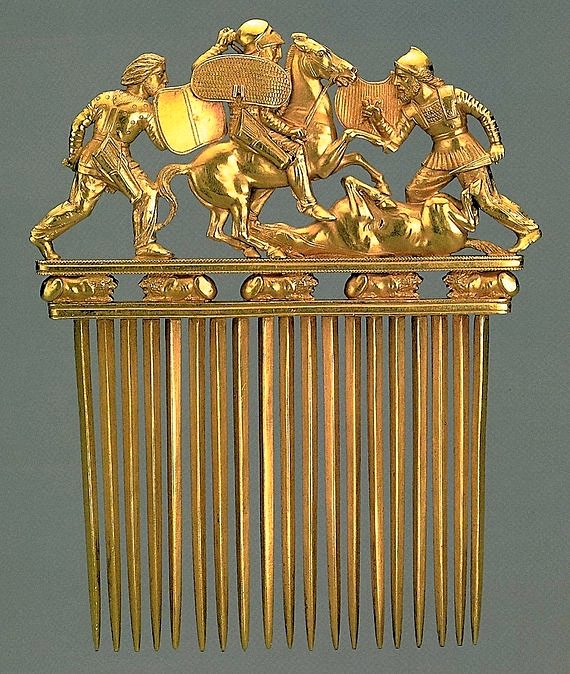Prehistoric Art
Often ignored by visitors in their rush to get to the masterpieces of European art for which the Hermitage is most famous, this fascinating collection will reward the curious with an introduction to the little-known culture of the ancient peoples of Siberia.

Occupying two sections of the ground floor of the Winter Palace, the collection's history dates back to the reign of Peter the Great, when Prince Mikhail Gagarin brought ten examples of ancient goldwork from Tobolsk province as a gift to the Emperor in 1715. Peter's passion was fired, and soon fresh examples were flooding into St. Petersburg, scavenged from ancient tombs across Siberia. The bulk of the collection comes from more scientific excavations of the 19th and 20th centuries, and contains items dating as far back as the Paleolithic era and drawn from the Carpathians to the depths of Siberia.
The highlights of the collection are still the examples of Scythian goldwork, including many of the famous animal design belt-buckles, and the contents of Altai burial mounds, also of the Scythian period (4th to 6th centuries BC). Also worthy of particular attention is the collection of extraordinarily fine metalwork from Koban and Colchain cultures, which flourished in the Caucasus region in the Bronze and Early Iron Ages.

